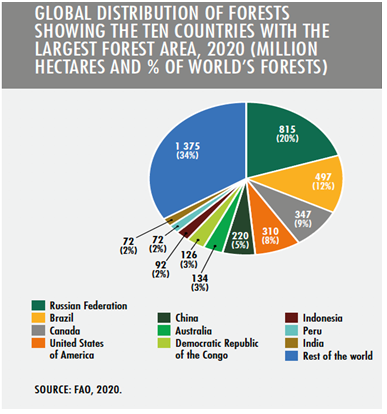7667766266
enquiry@shankarias.in
What is the issue?
According to State of the World’s Forests report 2020 released by UNEP and FAO, since 1990, around 420 million hectares of forest have been lost through deforestation, conversion and land degradation.
What is the need for forest restoration?
The year 2021-2030 is declared as the UN Decade on Ecosystem Restoration.
What are the key challenges in forest restoration?

What can be done to restore India’s fading green cover?
Source: The Hindu